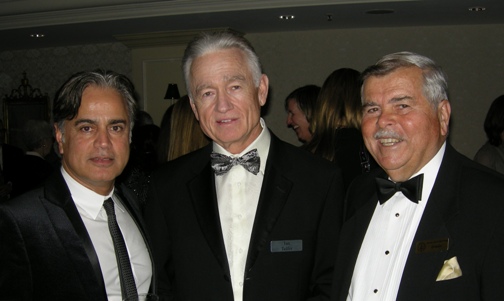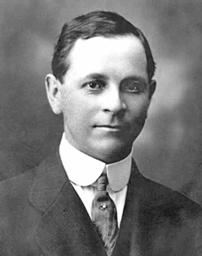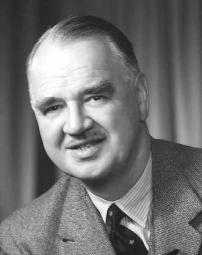This article was provided by the Ontario Mining Association (OMA), an organization that was established in 1920 to represent the mining industry of the province.
Mining was given top billing as a builder of Ontario’s future prosperity in the throne speech opening the new session of the provincial legislature yesterday. Ontario Mining Association President Chris Hodgson attended the throne speech as an invited guest of Premier Dalton McGuinty. “It is positive to see mining recognized in this important address as a contributor to solving Ontario’s economic challenges,” said Mr. Hodgson.
In introducing the launch of the five year “Open Ontario Plan” for economic growth and development, the speech, delivered by Lieutenant Governor David Onley, recognized the important role of mining. “Your government will ensure the North benefits from its Open Ontario Plan,” he said.
“In 2008, Northern Ontario became home to our first diamond mine. Your government will build on that success – particularly in the region know as the Ring of Fire. It is said to contain one of the largest chromite deposits in the world – a key ingredient in stainless steel.”























 Like the recent record setting price of gold and the stock market recovery, the general mood at the annual Canadian Mining Hall of Fame dinner at the Fairmont Royal York Hotel a few weeks ago in Toronto, was upbeat, bright and a turnout. Master of ceremonies Pierre Lassonde, Chairman of Franco Nevada Corp. – the Billy Crystal of the mining sector – was practically “giddy” discussing the high price of gold and Tiger Wood’s problems. “Gold miners never had it so good, like mosquitoes at a nudist colony” quipped Lassonde. He continued, “there is not enough mustard in the U.S. to cover that hot dog,” in reference to Tiger Wood.
Like the recent record setting price of gold and the stock market recovery, the general mood at the annual Canadian Mining Hall of Fame dinner at the Fairmont Royal York Hotel a few weeks ago in Toronto, was upbeat, bright and a turnout. Master of ceremonies Pierre Lassonde, Chairman of Franco Nevada Corp. – the Billy Crystal of the mining sector – was practically “giddy” discussing the high price of gold and Tiger Wood’s problems. “Gold miners never had it so good, like mosquitoes at a nudist colony” quipped Lassonde. He continued, “there is not enough mustard in the U.S. to cover that hot dog,” in reference to Tiger Wood.
 The Porcupine Gold Rush of 1909 was a transformative event in Canadian history, with three gold mines discovered by separate prospecting parties a few miles from each other. The rich discoveries made by Benny Hollinger (1885-1919), Sandy McIntyre (1869-1943) and John (Jack) Wilson (1872-1948) in northern Ontario wilderness led to the development of one of Canada’s premier mining camps and the founding of Timmins, the City with a Heart of Gold.
The Porcupine Gold Rush of 1909 was a transformative event in Canadian history, with three gold mines discovered by separate prospecting parties a few miles from each other. The rich discoveries made by Benny Hollinger (1885-1919), Sandy McIntyre (1869-1943) and John (Jack) Wilson (1872-1948) in northern Ontario wilderness led to the development of one of Canada’s premier mining camps and the founding of Timmins, the City with a Heart of Gold. Graham Farquharson has earned a reputation as a senior statesman of Canada’s mining industry by demonstrating a commitment to integrity, fairness and technical excellence throughout his career with Strathcona Mineral Services Limited, a consulting firm he created with two partners in 1974. He is one of the industry’s most prominent consultants, best known for taking on extraordinary challenges, including developing and managing Canada’s first mine north of the Arctic Circle and debunking an Indonesian property once believed to host the world’s largest gold deposit.
Graham Farquharson has earned a reputation as a senior statesman of Canada’s mining industry by demonstrating a commitment to integrity, fairness and technical excellence throughout his career with Strathcona Mineral Services Limited, a consulting firm he created with two partners in 1974. He is one of the industry’s most prominent consultants, best known for taking on extraordinary challenges, including developing and managing Canada’s first mine north of the Arctic Circle and debunking an Indonesian property once believed to host the world’s largest gold deposit. Victor Wansbrough served Canada’s metals mining industry with distinction for more than 20 years as the first full-time Managing Director of the Canadian Metal Mining Association (CMMA), the forerunner of the Mining Association of Canada. His appointment in early 1947 was a surprise, as he knew nothing about mining at a time when the industry faced serious challenges, notably a labor shortage and a gold mining industry in decline because of rising costs and a fixed gold price.
Victor Wansbrough served Canada’s metals mining industry with distinction for more than 20 years as the first full-time Managing Director of the Canadian Metal Mining Association (CMMA), the forerunner of the Mining Association of Canada. His appointment in early 1947 was a surprise, as he knew nothing about mining at a time when the industry faced serious challenges, notably a labor shortage and a gold mining industry in decline because of rising costs and a fixed gold price. Hugo Dummett was one of the world’s most respected economic geologists, aptly described as “the brains, the ideas and the energy” behind the first discovery of economic diamond deposits in Canada. In the 1970s and ‘80s, he worked with Canadian geologists Charles Fipke and Stewart Blusson and South African university professor John Gurney in a quest to find diamonds in North America. Almost a decade later, he convinced BHP Minerals to sign a joint venture with Fipke and Blusson’s junior company, Dia Met Minerals, and continue the diamond hunt in the Northwest Territories. The result of their collaboration was Ekati, Canada’s first diamond mine, and the development of a hugely successful, major new industry.
Hugo Dummett was one of the world’s most respected economic geologists, aptly described as “the brains, the ideas and the energy” behind the first discovery of economic diamond deposits in Canada. In the 1970s and ‘80s, he worked with Canadian geologists Charles Fipke and Stewart Blusson and South African university professor John Gurney in a quest to find diamonds in North America. Almost a decade later, he convinced BHP Minerals to sign a joint venture with Fipke and Blusson’s junior company, Dia Met Minerals, and continue the diamond hunt in the Northwest Territories. The result of their collaboration was Ekati, Canada’s first diamond mine, and the development of a hugely successful, major new industry. Peter Brown has contributed to the growth and prestige of Canada’s mining industry by helping many resource entrepreneurs and emerging companies gain access to venture capital that enabled them to acquire and explore promising mineral prospects or develop and operate new mines. He has been a dynamic force in the Canadian capital markets since 1968, when he joined Ted Turton in purchasing control of a small Vancouver brokerage firm for $23,000. By focusing on the small to mid-sized resource and junior industrial firms, long ignored by senior investment firms, he transformed Canaccord Capital Inc. (since renamed Cannacord Financial Inc.) into the largest independent investment dealer in Canada, with successful operations in Europe and the United States.
Peter Brown has contributed to the growth and prestige of Canada’s mining industry by helping many resource entrepreneurs and emerging companies gain access to venture capital that enabled them to acquire and explore promising mineral prospects or develop and operate new mines. He has been a dynamic force in the Canadian capital markets since 1968, when he joined Ted Turton in purchasing control of a small Vancouver brokerage firm for $23,000. By focusing on the small to mid-sized resource and junior industrial firms, long ignored by senior investment firms, he transformed Canaccord Capital Inc. (since renamed Cannacord Financial Inc.) into the largest independent investment dealer in Canada, with successful operations in Europe and the United States.